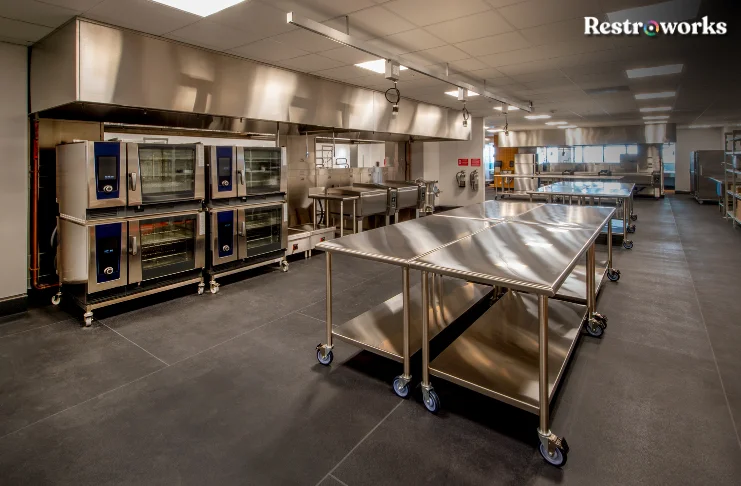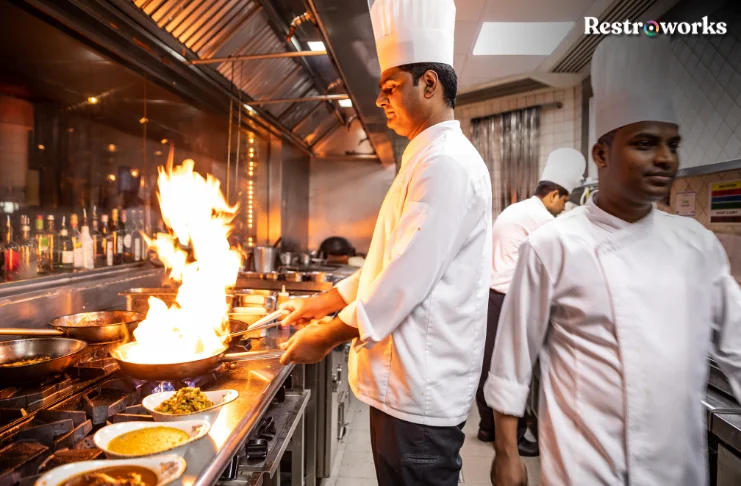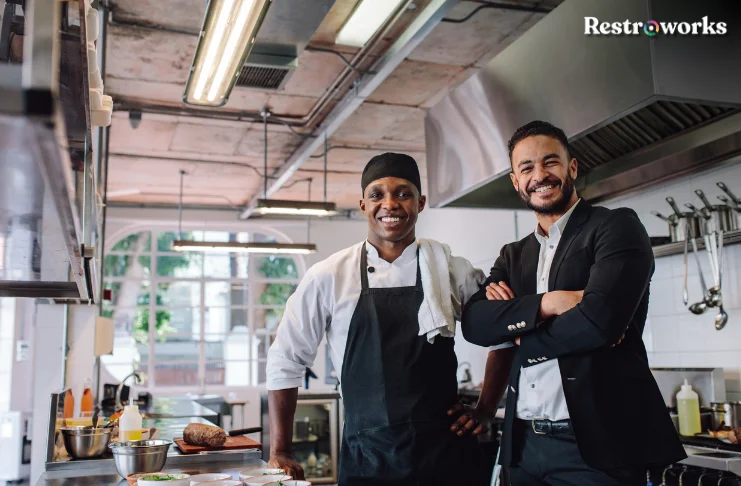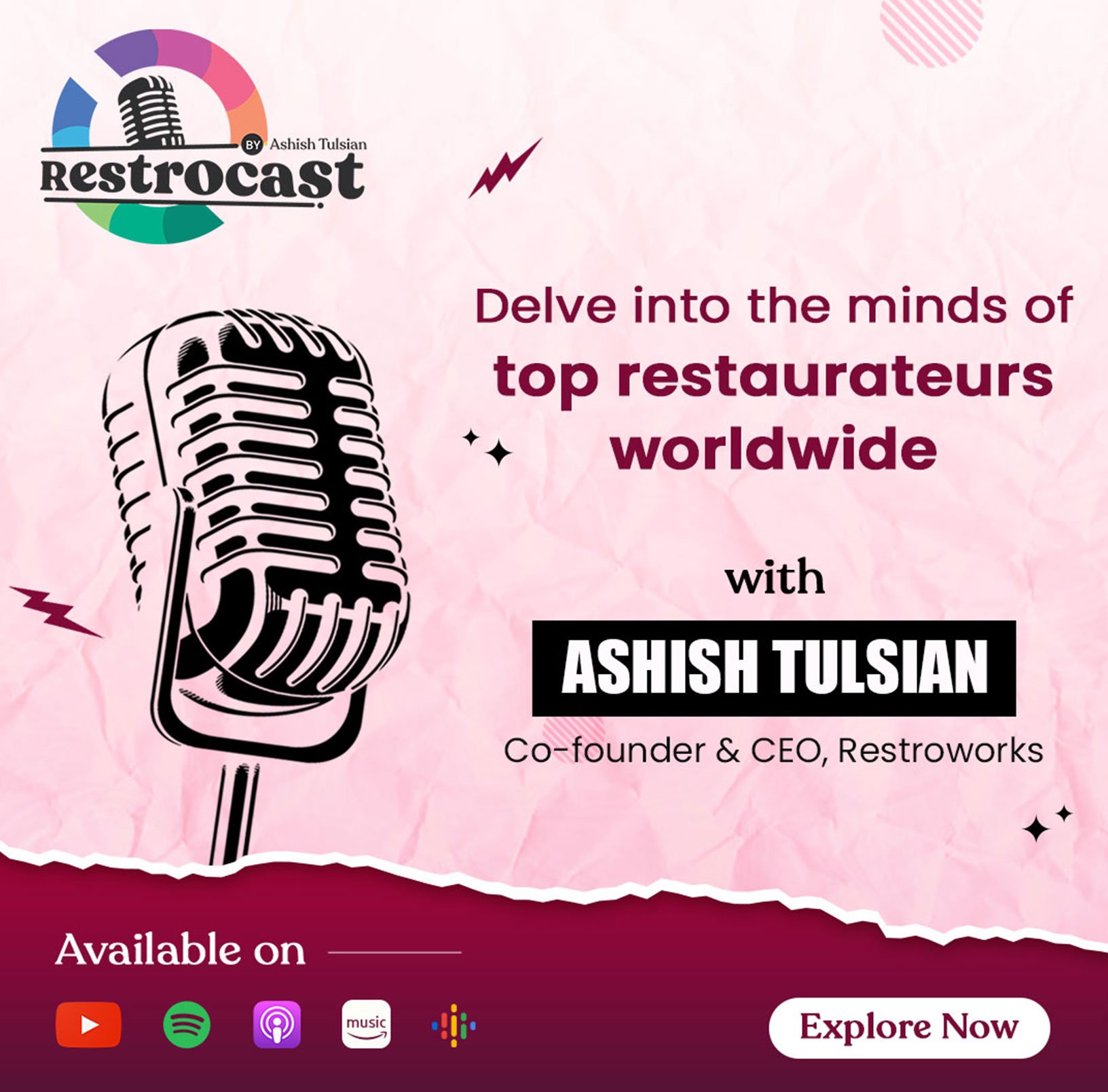
Dining at a restaurant is an experience in itself, yes. And dining out on the weekends is something that people look forward to. It provides the perfect opportunity for families or couples to bond and enjoy a meal together. Lately, however, restaurants have become more congested and expensive. The rising complaints against the restaurant staff, food quality or poor service are enough to leave a bitter taste for the customers making them more sceptical.
Just by looking at a restaurant’s business model, one can understand how expensive and complex the setup is. Moreover, in the post-COVID-19 world, restaurants have seen sluggish demand.
What if there was an alternative that was much more convenient and cheaper? Enter the concept of Cloud Kitchens. Unlike the brick and mortar restaurant model, a cloud kitchen operates with a much lower budget and is more convenient for owners and customers.
Cloud kitchens, with their efficient business model and the ability to cater to growing customer demand, are perfect for the future. Cloud kitchens can scale their operations quickly and effectively as they are driven by technology. This integration is not only making them futuristic but also transforming the restaurant industry itself.
With cloud kitchens, customers can enjoy a meal at the convenience of their home at whatever time they need. It also reduces the waiting time as customers don’t have to wait for other customers to finish dining. Overall, the prospects of setting up a cloud kitchen are bright.
In this guide, we discuss what a cloud kitchen is, how to set one up, and how establishing one can help you stay ahead of the curve in the restaurant industry.
What is a Cloud Kitchen?

As per the definition, a cloud kitchen is a commercial space where food is prepared and delivered to the customers. You can see how it differs from traditional restaurants by definition.
Cloud kitchens operate through online platforms and mobile apps. Customers can access these platforms and place the order. Once the kitchen receives the order, it prepares the food and delivers it directly to the customers. In this business model, there is no need to maintain a dining area. Hence, they are popularly called by many names like:
-
Cloud Kitchen
-
Ghost Kitchen
-
Virtual Kitchen
-
Dark Kitchen
Since the physical location dining space is not needed, a cloud kitchen restaurant becomes much more cost-effective. The cost of furniture, decorations, serving staff, and other overheads that add dearly to the cost of the food are eliminated. As a result, ordering food from cloud kitchens is much more affordable for customers.
The changing customer preferences have made the cloud kitchen concept an instant hit. With the introduction of food delivery aggregators, everyone wants to get the food delivered to the places of their convenience. Be it homes or offices, the increasing demands for online food delivery platforms is a great sign.
Characteristics of a Cloud Kitchen Business
To understand what a cloud kitchen is, it is important to learn about its characteristics. Here are the key characteristics:
No dining facility: Cloud kitchens prepare food and deliver it to the customers directly. Hence, there is no need for a separate dine-out facility. This type of model is gaining popularity among customers who want to have restaurant food in the comfort of their homes.
Operations through online platforms: The cloud kitchen business is run online. Customers book their orders online using food delivery service apps or websites. This helps the cloud kitchen restaurant streamline the ordering process by increasing efficiency and saving on serving staff salaries. The online process helps the kitchen to focus on the quality of food and prompt order delivery.
Cost efficiency: Maintaining a dining area that attracts customers is extremely costly. As a result, the food served by the restaurant becomes costly and reduces its reach. On the other hand, a cloud kitchen can serve more customers who want to buy affordable food.
Multiple brands under one roof: As cloud kitchens run online, there is no need to put a specific brand on the outlet and market it. Hence, you can run multiple brands from the same kitchen space. Isn’t it more cost-efficient? This is another important point that increases the profitability.
Higher use of technology: The order management of a cloud kitchen is completely technology-driven. Technology helps to achieve multiple objectives, such as:
Efficient order management
Tracking the delivery
Maintaining good food quality
Enhancing the customer experience
What is the Business Model of a Cloud Kitchen?
The cloud kitchen business model focuses on two main things: efficient management and cost reduction to boost profitability. For this, they focus solely on food quality and prompt deliveries. In this section, we will try to understand the business model of a cloud kitchen.

Overview of the Business Model
The first step is to look at the setup of a cloud kitchen. Here’s what the setup usually looks like:
Centralised Kitchen: Cloud kitchens use a centralised kitchen to prepare food orders. This helps optimize space and streamline operations.
Online Apps: Orders are received, tracked, and executed online using websites and food delivery apps like Uber Eats. The apps’ interfaces make it easier for the cloud kitchen to manage the orders.
Focus on Delivery: Order management is not much of a headache, so cloud kitchen restaurants focus on quicker food delivery. By ensuring timely delivery, they can increase customer satisfaction.
Multiple Brands: Cloud kitchen allows different brands to use the same kitchen space. This leads to better resource utilization and reduced costs.
Revenue Stream of a Cloud Kitchen
Now, here’s the million-dollar question. Well, literally! Where does the cloud kitchen earn its money from? Here are the most popular sources of revenue for a cloud kitchen restaurant:
Direct orders: A cloud kitchen can directly take orders from various sources like phone calls, social media, WhatsApp, a dedicated restaurant app, etc. The availability of multiple options increases the capacity and scalability of the cloud kitchen.
Orders from delivery apps and websites: Apart from the above means, a cloud kitchen can also receive orders using third-party food delivery apps. These platforms make it even easier for the cloud kitchen restaurant as they do not have to worry about delivering the goods.
Subscription offers to customers: Cloud kitchens can also provide monthly subscription plans to customers who order regularly. This arrangement can help them generate a regular stream of fixed income.
Catering for parties and other events: Once the cloud kitchen becomes popular, it can take bookings for special business and family events. This helps the business grow and scale its operations further.
Operations Management
The next question is, how does a cloud kitchen manage its operations? Being one of the cornerstones of its business model, cloud kitchens strive to achieve operational efficiency. Here’s how they do it:
Optimum Resource Utilization: The layout of a cloud kitchen restaurant promotes optimum resource utilization. It makes life easier by streamlining food preparation and packaging, minimizing the time and effort required to meet orders.
Technology Integration: Cloud kitchens can use order management systems to manage orders efficiently. One key concern with cloud kitchens is wrong order delivery, which technology can cure.
Scaling and Resource Sharing: Sharing the same kitchen space between different cloud kitchen brands can improve resource utilization and sharing.
Data Analytics: Since the operations of a cloud kitchen are mostly online, they can access the data, track performance, analyse key metrics and identify areas that need improvement. With analytics at their fingertips, cloud kitchens can make informed business decisions.
Business Model in Comparison to Traditional Restaurants
Now that you have understood how the cloud kitchen business model works, it is time to compare it with traditional restaurants. By doing this comparison, you can understand what makes Cloud Kitchens stand out. Here are the key differences:
Overhead Costs: A traditional restaurant concept needs to maintain a properly decorated dining area and have trained staff to provide service to the customers. As a result, the overhead expenses are too high in the traditional model. However, a cloud kitchen removes this requirement. Saving overhead costs helps cloud kitchens utilize the capital well and generate more profits.
Scalability: It is easier for a cloud kitchen to expand by setting up additional kitchens at different locations. Unlike a traditional restaurant that needs to worry about setting up the dining space, a cloud kitchen can operate with a minimum kitchen setup only.
Flexibility: Cloud kitchens can adapt much more easily to changes in the market and customer preferences. With less baggage to carry around, cloud kitchens can be easily shifted.
Delivery vs Service: While a restaurant has to focus on both food quality and exceptional customer service, it is difficult to maintain the standards. With one less thing to worry about, cloud kitchens can solely focus on the quality of food and timely delivery.
What are the Types of Cloud Kitchens?
Now that we have discussed what a cloud kitchen is and its business model, you should know about the types of cloud kitchens you can open. Depending on your capital, area of operations, customer preferences, etc, food entrepreneurs should choose the one that suits you the best. Here are the types of cloud kitchens:
Independent Cloud Kitchens
When a single business operates a cloud kitchen, it is called an independent cloud kitchen. The kitchen’s operations from procuring inventory to food preparation and delivery logistics are controlled by the cloud kitchen restaurant. Here are the key features of an independent cloud kitchen:
Control: As there is no third party involved in between, the owners of the kitchen have complete control over the operations. This helps them to tailor their customer experiences.
Brand: By setting up an independent cloud kitchen, you get the opportunity to develop your operations and create a strong, recognizable brand. As your business grows, you can:
expand to full-fledged restaurant-style operations, or
other possibilities like catering at events
Directly earned profits: The kitchen owner receives all the profits directly, making the money flow easier.
Shared Cloud Kitchens
When multiple food businesses use the same kitchen area for their operations, it is called a shared cloud kitchen. Similar to the concept of shared office spaces, a shared cloud kitchen has many benefits:
Cost Sharing: The overhead costs like rent and kitchen equipment can be shared between the multiple cloud kitchens. It reduces the burden on one kitchen and leads to lower costs and cheaper food.
Collaborations: A community environment is created in a shared kitchen space. All the cloud kitchens can work in tandem and support each other. They can also team up and collaborate to pull off large orders or events.
Flexibility: When you are an emerging food brand, it is most fruitful to use a shared kitchen space. It reduces the capital investment and operational costs. As a result, you can start profiting early and build up on your dream restaurant business.
Third-Party Cloud Kitchens
As the name suggests, third-party cloud kitchens are owned and operated by an experienced business that manages all operations from food preparations to delivery. So, you can create a cloud kitchen brand, design the menu and market your food. Rest all is taken care of by the third party.
Due to this unique model, it is often called an outsourced cloud kitchen. The third party in turn can provide its services to multiple cloud kitchen brands from the same space. You can leverage the expertise of a third party to grow your business quickly.
Hybrid Cloud Kitchens
It is an independent cloud kitchen, but instead of solely delivering the food to the customer’s location, it also offers takeaway service. The customers can come and wait in a well-curated service area. The food is prepared, and the customers can take away their packages themselves.
Benefits and Challenges of Opening a Cloud Kitchen
At this point, you would be thrilled by the idea of opening a cloud kitchen. But, before you throw caution to the wind and jump right in, here are the benefits and challenges faced by a Cloud Kitchen. Knowing them beforehand will make it easier for you to assess your position and make informed decisions. From leveraging food delivery services and creating virtual restaurant brands to ensuring food safety and managing delivery drivers, understanding these aspects will help you navigate the complexities of the cloud kitchen business with confidence.
Benefits of Running a Cloud Kitchen
Some of the key benefits of opening a cloud kitchen are:
Lower Overhead Costs
The cloud kitchen concept itself removes one of the biggest barriers for investors. As there is no need to provide dining service to customers on the premises, the overhead costs are substantially reduced. It can allow a person with limited capital to start a cloud kitchen restaurant and grow the business. Here are the costs saved by the cloud kitchen business model:
Rent: Usually, the commercial restaurants in the beginning are rented. Unlike a restaurant that needs to operate in a prime locality to ensure high customer footfall, a cloud kitchen can operate from a less expensive area.
Staff: Restaurants need a dedicated team of trained wait staff to handle the customers. Their salaries are high and it can be difficult to sustain such expenses in the beginning. Cloud Kitchen doesn’t need any wait staff making it cheaper to operate.
Decoration: Restaurants need decor, music, elegant furniture and cutlery to enhance the customer experience. With all the orders being delivered to the customer’s doorstep, this heavy cost is saved for cloud kitchens.
Scale the Operations
Why are cloud kitchens one of the most attractive investment opportunities for entrepreneurs and investors? Because they are conducive to high growth and the operations can be scaled up quite easily. They also promote flexibility:
Easy to expand: With less cost involved and a simple kitchen setup, it is easy to expand and open additional cloud kitchens. Unlike restaurants that often demand high renovation costs and large capital investments, cloud kitchens are cheaper to set up.
Can operate multiple brands: A single cloud kitchen can serve multiple brands. It allows cost-sharing and reduces the burden on the profits of one business. They can also share their expertise and tools. They can also collaborate to successfully deliver big orders. This makes them more adaptable to changing customer preferences and market trends.
Flexible menu Items: Unlike traditional brick and mortar restaurants that need to conduct large surveys to get customer feedback, a cloud kitchen restaurant can almost instantly receive feedback from its customers in real-time, online. As a result, they can make changes to their menus quickly by studying these customer preferences.
Expand the Market Reach
Cloud kitchens have a huge advantage over traditional restaurants. They can reach a large number of customers through online delivery platforms and by setting up their kitchens at multiple locations. Here’s how cloud kitchens expand:
Online Apps: Cloud kitchens leverage their online presence. They receive orders online using delivery apps and websites and are thus able to tap into a large customer base.
Increased Delivery Radius: With online presence, cloud kitchens are not limited to a small geographical area. As a result, they can serve a wider customer base over a large radius.
Digital Marketing: The breakthrough of social media has made it easier for online businesses to market their products and grow at a faster pace. This opportunity allows cloud kitchens to use social media and other digital marketing tools to attract customers even from distant locations.
Develop your Core Culinary Skills
Online applications make it easier to operate cloud kitchens. As the order tracking and management are taken care of, the owners, staff, and chefs can focus their attention on core issues, i.e., the food quality, taste, and prompt delivery. Here’s how cloud kitchens benefit:
Consistency: Dedicating more time and effort to culinary skills ensures that the taste and quality of the food remain top-notch. Keeping this in mind will improve customer satisfaction.
Innovation: Experimenting with new dishes and trying innovative dishes is easier for cloud kitchens than it is for traditional restaurants. Selli9ng unique dishes can become a USP for a cloud kitchen and help it grow quickly.
Challenges Faced by a Cloud Kitchen
By the looks of it, a cloud kitchen business seems extremely lucrative and an easy prospect. But not everything is perfect. A cloud kitchen faces a lot of challenges before it becomes successful. Here are the major challenges:
Higher Competition
The biggest challenge of a cloud kitchen is to sustain heavy competition. Cloud kitchens are becoming popular day by day and the minimal investment required for the setup is making it more approachable for entrepreneurs. As a result, the cloud kitchens are facing the following impact:
-
Saturation: When there are too many options, it becomes obvious that customers will go for the best-known options. Hence, gaining the first mover advantage is a key for cloud kitchens. With such an easy setup and too many options, the market for cloud kitchens is reaching saturation. This means it is harder for new cloud kitchens to sustain, even at such low costs.
-
Competitive Pricing: The benefit of less capital investment is available to all cloud kitchens. Hence, there are many cheap alternatives. In such a scenario, there is no other option for the cloud kitchen, but to provide huge discounts and drastically cut the prices down. Such intense price competition is enough to eat up the profits and render the business unsustainable.
-
Brand Building: Imagine an extremely crowded market with loads of customers. It will be hard to hold your footing if you are walking in the crowd, right? Similarly, with new cloud kitchens flooding the market every day, it is very difficult to sustain the footing in the market.
Overdependence on Third Party Delivery Partners
It is costly and time-consuming to maintain an owned delivery logistics system. Hence, most of the cloud kitchens are heavily dependent on third-party delivery partners like Uber Eats to reach the customer. While it is more cost-efficient and requires less in-house effort, there are many challenges such an arrangement can pose. They are:
Commission: Third-party delivery apps charge a significant commission amount to provide their services. Even though it is cheaper as compared to the in-house delivery system, it is significant enough to dent the profits of a cloud kitchen.
Quality of Service: With outsourced delivery logistics, the customer experience is dependent on the quality of service provided by the delivery partner. As the customer accesses the ordering and delivery through third-party apps, a cloud kitchen can only control so much of the customer experience.
Algorithms: Apps and websites retrieve information for customers based on set algorithms. As a result, the visibility of a cloud kitchen depends solely on the algorithm and ratings. This system might not be favorable for new and upcoming cloud kitchens.
Enhancing Customer Experience
Without a dining space, there is no physical contact between a cloud kitchen and its customers since there is no physical physical dine in space or storefront. All the interaction happens online through websites or third-party apps. In such a scenario, maintaining good customer satisfaction becomes a huge challenge. These are the challenges faced by cloud kitchens in enhancing customer experience:
Consistency: Customers prefer cloud kitchens that provide a uniform taste of their popular dishes and maintain good quality packaging. Maintaining a standard can be challenging for a cloud kitchen with a limited budget.
Customer Feedback: A cloud kitchen’s visibility and reach can be significantly restricted by poor reviews and ratings online. It can significantly dent the reputation and reliability of the business.
Brand Loyalty: It is very difficult for a cloud kitchen to create brand loyalty without in-person service and interaction with customers. For this, a cloud kitchen needs to so exceptional marketing and food quality. However, this deadlock can be removed by leveraging social media handles and other means to directly build a relationship with customers.
How to Setup a Cloud Kitchen?

Many of you at this stage might be discouraged from the challenges of opening a cloud kitchen restaurant. Don’t Worry! We have got you covered. Here are the steps to set up and run a successful cloud kitchen business.
Plan & Research Well
To begin with, you should have a proper plan in place to set up the cloud kitchen. As the saying goes, well begun is half done! Understanding the market and identifying potential customers and your competitors is very important. Proper research and analysis of these details will help you make a foolproof plan.
Find a Suitable Kitchen Location
Research Well: The first step is to study the demand for different cuisines and dishes that are popular in your area. You can use online tools and forms to conduct social media surveys. This information will help you choose the best combination of dishes for the menu.
Target Customers: Identify the types of customers you want to target. What age group do they belong to, and what are their food preferences? For example, it is a better option to start a fast food joint as a cloud kitchen if the target customers are young students or professionals. You can also provide healthy alternatives to junk food as your USP to attract more students.
Analyse your Competitors: You should also take a closer look at what your competitors and traditional restaurants are offering to your target customers. Understanding their business structure will help you develop yours well. You can learn from their mistakes and build a successful cloud kitchen.
The location of your kitchen is crucial for many aspects. For setting up a cloud kitchen, you do not need to find prime locations and high-traffic areas. But, a strategic positioning will help you access and cater to a wider customer base. Consider the following metrics:
Radius of Access: The location of your cloud kitchen should be ideal to cover a larger delivery radius. Setting up the kitchen in a central location works best for cloud kitchens.
Cost Reduction: Opting for commercial spaces with a lower rent can help you reduce overhead costs.
Prompt Delivery: You should select a location from where you can deliver the food quickly to all locations.
Fulfill the Legal and License Requirements
Usually, a cloud kitchen needs to obtain multiple permits and licenses to operate its kitchen. Complying with the rules and regulations upfront can ensure that the kitchen runs smoothly. Here are the main documents that a cloud kitchen should obtain:
Health Permits: A cloud kitchen should get a health permit from local authorities to ensure the safety of public health.
Necessary Licenses: It is important to obtain registration and necessary licenses to avoid legal action.
Insurance: Getting a comprehensive insurance cover for the cloud kitchen is of paramount importance. Here’s what your insurance should ideally cover:
Protection against liabilities
Property damage
Worker’s compensation
Setting Up of the Kitchen
After completing the preliminaries, it is time to step up the game and start laying the foundation to build a successful cloud kitchen:
Design the Kitchen Layout: While designing the layout of your cloud kitchen, you should ensure that the space is optimally utilized and that the design aids in the smooth operations of the kitchen, increasing efficiency. For this, you can:
Arrange the equipment well.
Create separate zones for each type of activity.
Ensure that the design follows the safety precautions and protocols properly.
Purchase Kitchen Equipment: Although you don’t need a dining area, you should invest well in buying good quality equipment. It might cost once but will be very handy for your cloud kitchen in the long run.
High-quality kitchen appliances
Inventory management system
Software to integrate your operations with technology
Hire the Required Staff: Hiring only important staff can help you save on costs and make optimum use of their time and efforts. A cloud kitchen should carefully select the chefs and other helping staff who can handle pressure and deliver.
Setup Online Food Ordering and Delivery System: Now, you can set up your account with third-party delivery partners or establish your website to provide these services.
Apply a Good Marketing Strategy: Use social media extensively to promote your cloud kitchen. Getting regular engagement from the target audience can make your kitchen popular and help in increasing the footfall. You can also invite food bloggers and vloggers to promote your kitchen by providing them with free food.
Offer Discounts and Combos: Customers are attracted to cloud kitchens that provide discounts and offers, especially to regular customers. In this way, you can ensure regular footfall.
Maintain Good Quality of Food and Packaging: Ensure that the quality of food and packaging doesn’t suffer. Remember, it is the only tangible contact between you and your customers. Try to win them over by stimulating their taste buds.
In a Nutshell
The delivery-only cloud kitchens are definitely revolutionizing the restaurant industry. Not only are they successful, but they also provide more profitability. The high-growth and low-cost cloud kitchen business model has become an instant hit, especially after COVID-19. With more customers preferring to order in rather than dine out, the prospects for the food industry are only looking brighter. Cloud kitchens also have their fair share of challenges, but with clear planning and thorough research, it is possible to make it successful. Leveraging the online food delivery market to deliver food without the need for a physical storefront, utilizing ghost kitchens in commercial kitchen spaces, opens up new avenues for profit and growth.
Restaurant owners can develop multiple virtual restaurant brands and manage delivery operations effectively by working with a cloud kitchen provider or starting their own cloud kitchen business. Meeting the rising food delivery demand through online food delivery orders while offering unique food concepts can set them apart. Additionally, establishing their own delivery service or collaborating with third-party delivery services can further optimize the delivery-only business model.
Frequently Asked Questions
Cloud kitchens are delivery-only setups where food is prepared and delivered to the customer’s doorstep. While the customers order and enjoy the meals from the comfort of their homes, you can enjoy lesser costs and more profits.
Cloud kitchens operate commercial spaces to prepare food for delivery. They use technology to receive orders and ensure that the food is delivered safely to the customers.
Cloud kitchens have revolutionized the restaurant industry and the entire business model. The concerns regarding cloud kitchens are:
Their aggressive expansion
Privacy of customer data
The impact on traditional restaurant business
Yes, you can operate a cloud kitchen from your home as long as it complies with health and safety regulations, the scale is very small and you have a reliable delivery partner or delivery driver.
Cloud kitchens are known by many names like:
Ghost Kitchen
Virtual Kitchen
Dark Kitchen
With minimum overhead costs and efficient operations, cloud kitchens are successful as a business model. You can not only scale your operations but also ensure high profitability.
When a restaurant runs a cloud kitchen, it is called a hybrid model. A part of the premises is allotted separately for delivery orders, while the rest of the restaurant operates as usual. This hybrid model helps restaurants to maintain high sales by adapting to changing customer preferences.








